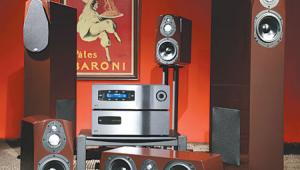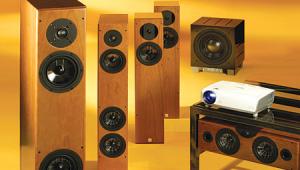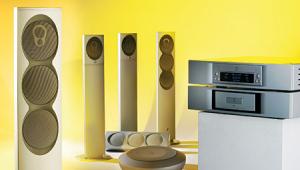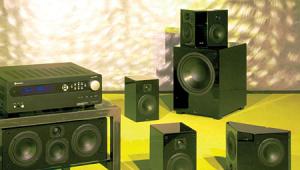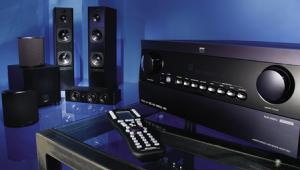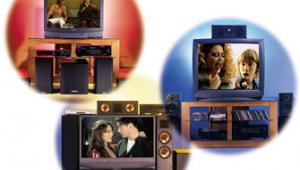The Good, The Better, & the Best Besting the Budget
When you're fighting to put together the perfect home theater system, it's good to have an ally. I'm normally a kind, compassionate human being (warm, witty, and incredibly good-looking, too), but I felt mighty smug and superior when I received the assignment to select the best A/V system I could find for $5,000, while my less-fortunate comrades had to make do with virtually laughable sums from which to cobble together their systems. Five grand—now that's a real man's budget. Packing that kind of punch in your wallet, you can wander through an A/V showroom (a mob of drooling, hungry salespeople in your wake) while you casually point to a particular speaker or TV and say, rather flippantly, "That'll do."
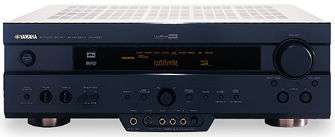

Real life, of course, isn't quite that simple. Picking out gear for a system, regardless of the budget, is a tough balancing act. That pesky budget affects your every move: To get something enticing here, you often have to give up something equally appealing there. Once you think you've finally made the right decision, there's always a better model (for just $100 or $200 more) sitting on the next shelf, tempting you to shatter the budget you swore you'd stay within.
So, after a bit of deep thought (as much as I'm capable of in one day), I decided to do what I'd recommend to any person ready to part with serious money (and I consider all money to be serious): I went to a specialty retailer. Specialty retailers are the antithesis of the big, we-carry-everything-but-don't-know-much-about-it chain stores. Although I'm biased from years of working in A/V specialty stores, that doesn't change the fact that these stores are filled with great gear and salespeople who: 1) love music and movies; 2) actually understand the equipment; and 3) often have years of hands-on experience. Even if you can't afford $10,000-per-pair speakers or a $20,000 television, hearing and seeing this kind of gear firsthand will help you better-judge the less-sophisticated gear. Besides, you'll probably be surprised to find quite a lot of stuff you can afford.
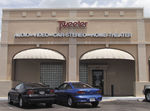 Tweeter is a chain of specialty stores that's rapidly expanding around the country, largely by purchasing smaller, regional specialty stores. My experience at a Tweeter store in Houston, Texas, matched what I've come to expect from the finest specialty operations. From my first phone call to the manager, Tim Gallagher, to the hours I spent in the store with salesmen Jon Ermel, Sam Hartsfield, and others, everyone was eager and interested in recommending a system. This wasn't the result of a corporate mandate or hokey mission statement they'd been forced to memorize. With these guys, it was a matter of personal and professional pride.
Tweeter is a chain of specialty stores that's rapidly expanding around the country, largely by purchasing smaller, regional specialty stores. My experience at a Tweeter store in Houston, Texas, matched what I've come to expect from the finest specialty operations. From my first phone call to the manager, Tim Gallagher, to the hours I spent in the store with salesmen Jon Ermel, Sam Hartsfield, and others, everyone was eager and interested in recommending a system. This wasn't the result of a corporate mandate or hokey mission statement they'd been forced to memorize. With these guys, it was a matter of personal and professional pride.
Videophiles may disagree, but I'll go to the grave—or at least intensive care—believing that everything else in a system takes second place to the speakers. Speakers are so important, in fact, that I'd spend $4,999 on them and split the remaining greenback on the receiver, TV, and DVD player. Unfortunately, the retail shelves aren't filled with 33¢ receivers or TVs, so the compromising begins.
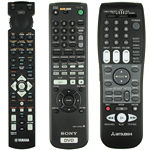 Immediately, Jon and I agree that my budget eliminates the Sonus Faber and Vienna Acoustics speakers I love. I dry the tear forming in the corner of my eye and move on. We pause briefly by a complete sub/sat system from Boston Acoustics, but I'm in the mood for something bigger, with a slightly more-aggressive sound. Fortunately, Tweeter has a deal on a Klipsch Reference package that includes a pair of floorstanding RF-3s, an RC-3 center channel, RS-3 surrounds, and a KSW-12 powered subwoofer. The special $2,000 package price is exactly what I figure I need to spend on speakers, so I spend quite a bit of time listening to them in the demo room.
Immediately, Jon and I agree that my budget eliminates the Sonus Faber and Vienna Acoustics speakers I love. I dry the tear forming in the corner of my eye and move on. We pause briefly by a complete sub/sat system from Boston Acoustics, but I'm in the mood for something bigger, with a slightly more-aggressive sound. Fortunately, Tweeter has a deal on a Klipsch Reference package that includes a pair of floorstanding RF-3s, an RC-3 center channel, RS-3 surrounds, and a KSW-12 powered subwoofer. The special $2,000 package price is exactly what I figure I need to spend on speakers, so I spend quite a bit of time listening to them in the demo room.
The RF-3 is a two-way speaker that's a little over a yard tall, with a curved front grille that covers two 8-inch woofers and a 6-inch square Tractrix horn. The port on the back, along with the horn tweeter, helps make the speaker highly efficient (98 decibels), meaning less power demands from the receiver. Also very efficient (97 dB), the RC-3 uses an identical horn tweeter between two 6.5-inch woofers. It's a big center channel, but I plan to place it atop the biggest screen I can finagle into the system, so no worries there. The RS-3 surrounds are also pretty big (over 9 inches tall and almost 19 inches wide), but that's because they accommodate fore- and aft-firing 6-inch horns with a 6.5-inch woofer sandwiched in the middle.

The Klipsch Reference ensemble is pretty impressive for the money. It's a smoothly blended system for music, and the horns effortlessly put you in the middle of a film's dialogue and special effects, although it lacks a little bottom-end kick with movies. The KSW-12 12-inch powered sub does a good job, but it doesn't have the gut-punching authority I was hoping for. Unfortunately, after I looked at all the other options, it was soon apparent that I wasn't going to get significantly better bass without spending significantly more money. It stayed in the package.
